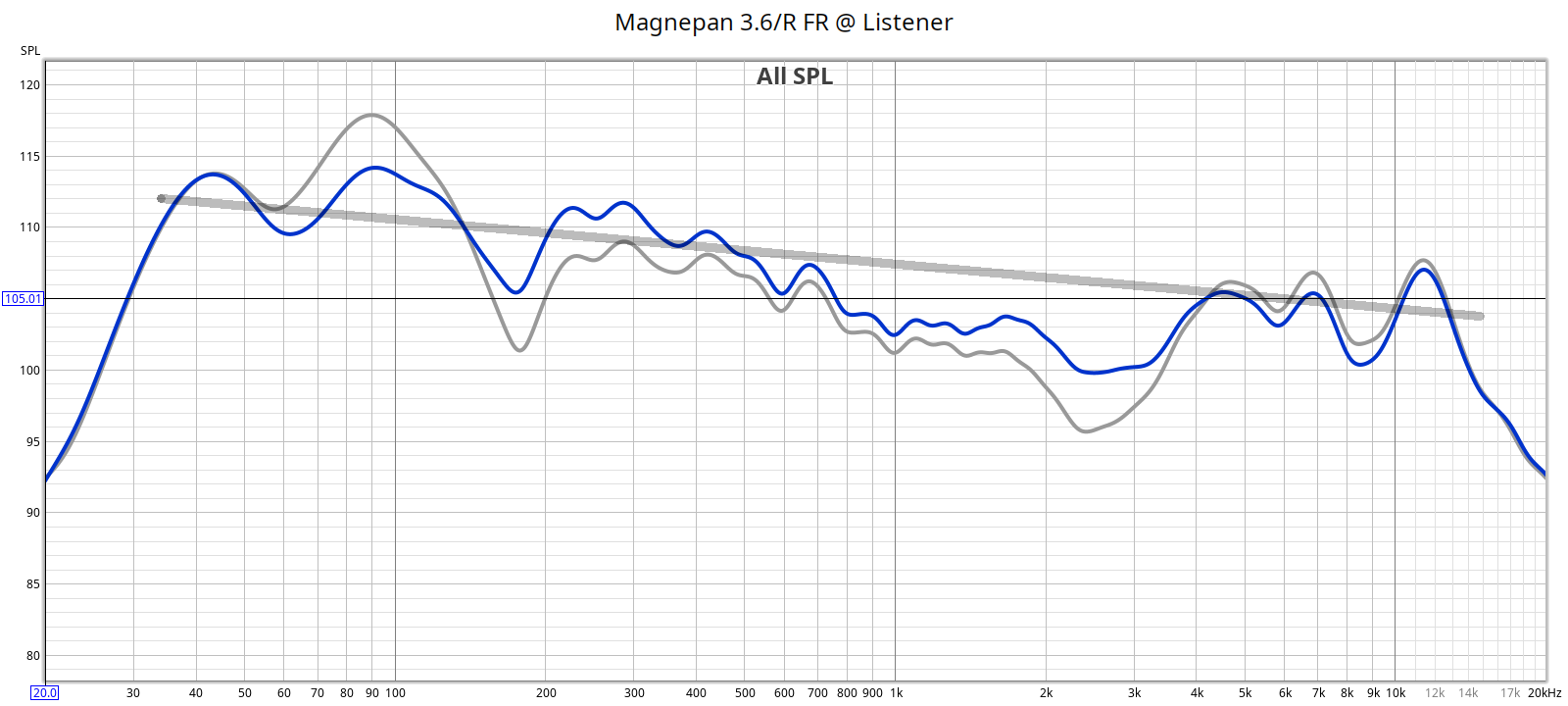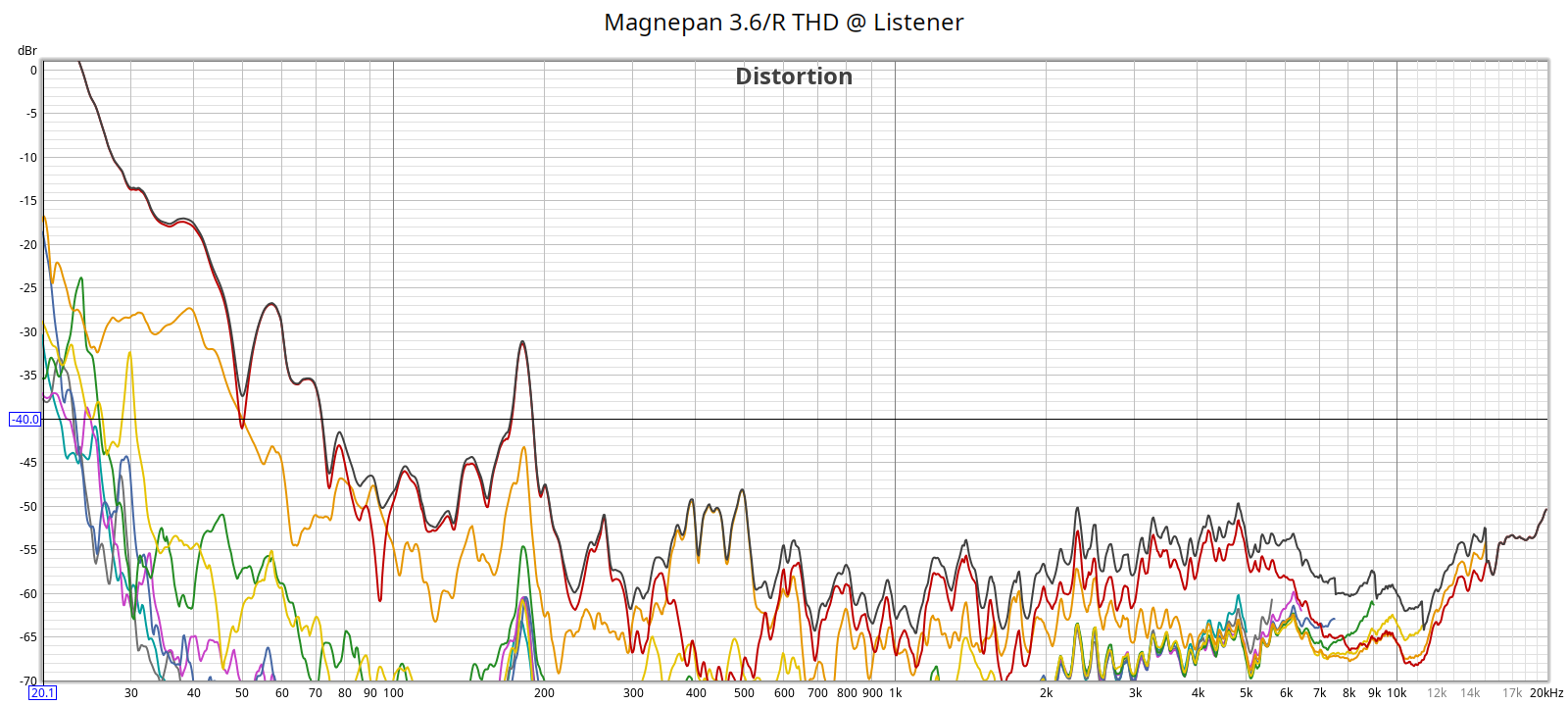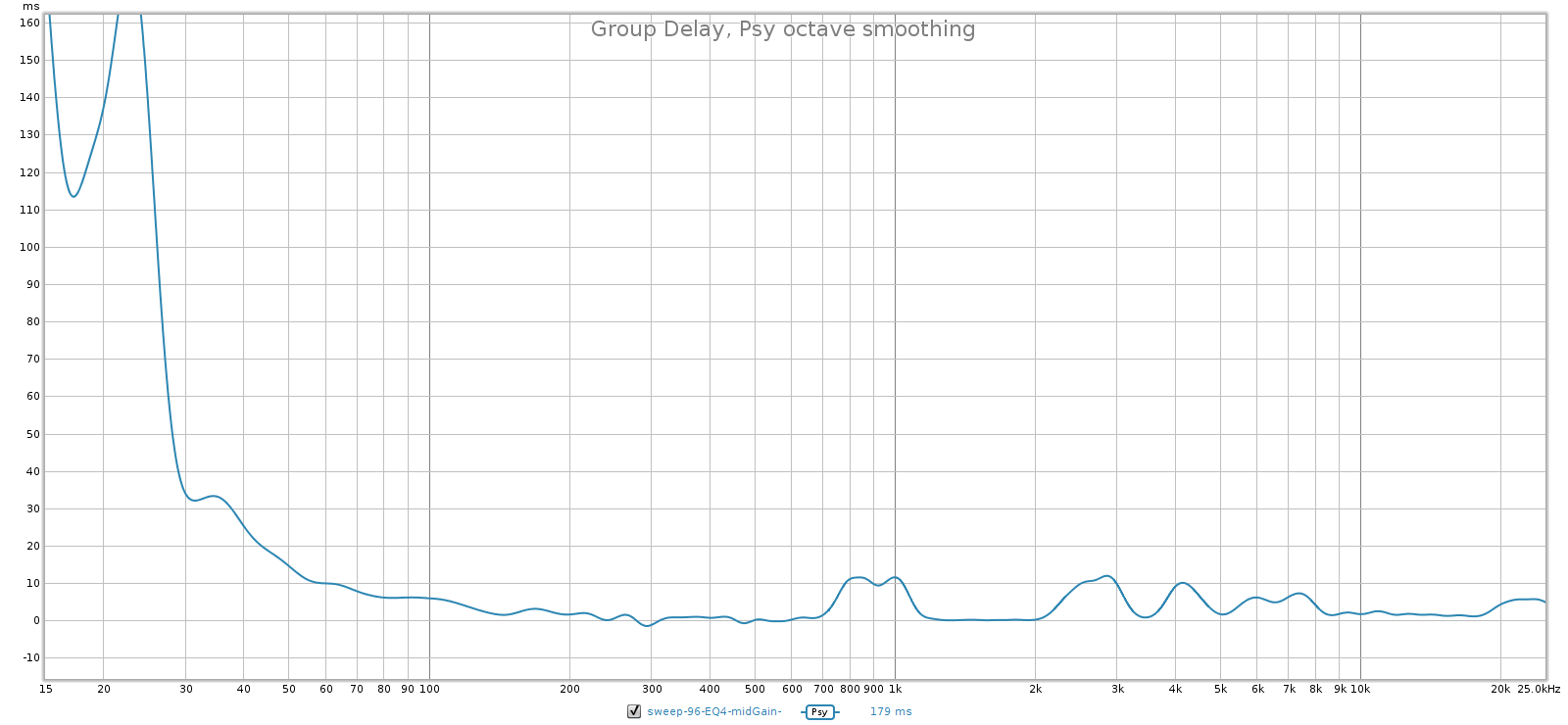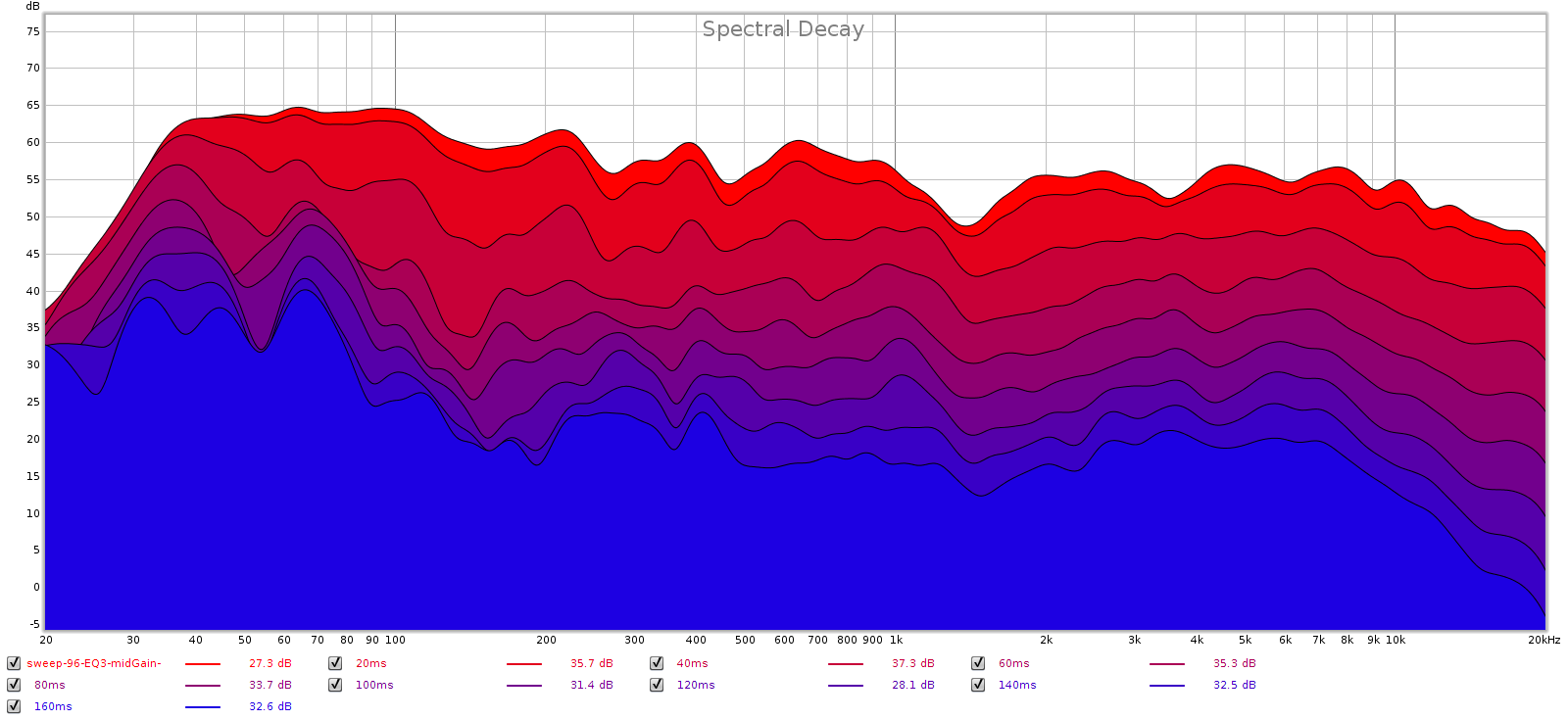The Problem
Streaming classical music has 2 basic problems.
Note: I use the term “classical” in the most general sense, from ancient (pre-renaissance) to modern, including early music, baroque, classical, romantic, etc.
Fast forward 3 years and I'm now using Qobuz. I've added Qobuz to some of the comments below.
Metadata
ID3 has become the standard metadata for music, defining fields like title, artist, album, etc. This has an impedance mismatch with classical music. For example, if the Chicago Symphony is playing the Brahms violin concerto with conductor Reiner and soloist Heifetz, who is the artist? Brahms, Chicago Symphony, Reiner or Heifetz? What is the title? Violin Concerto in D Major, Opus 77, Chicago Symphony Live, or some nickname? If you search for this piece on streaming services like Spotify, Tidal, or Amazon, you will find all of the above, each individual recording having different metadata. Exacerbating this problem is the fact that every piece from every composer typically has tens if not hundreds of different recorded performances by different artists. This inconsistency makes it frustrating to find classical music.
Sound Quality
The sonic quality of the recording presents another problem. Most popular music is recorded with terrible sound quality: massive dynamic compression with clipping, and extreme amounts of EQ and other processing. They’re engineered to sound as loud as possible for radio, streaming and listening in noisy environments with crappy earbuds. This makes it easier for streaming, since the recording was already squashed to death by the studio during production, sound quality doesn’t matter because there’s nothing to preserve. However, sound quality matters with classical music. These recordings are made to a higher standard, having minimal studio processing, preserving dynamics and detail that lossy compression would destroy. This is important to reveal subtle variations in artistry, such as how a pianist voices chords, to a cello player’s bowing technique, to a flute player’s tone colors. This makes it harder to stream classical music.
So while there is plenty of classical music on standard streaming services, finding the piece you want, and the available recordings, is frustrating if not impossible. And when you finally do find it, listening to it through the streaming service’s lossy compression can be more disappointing than satisfying.
Thus it comes as no surprise that streaming accounts for only about 25% of classical music consumption, compared to 64% for the rest of the market.
The Solution
Even though classical makes up only about 3% of music sales, companies have formed to solve these problems. The 2 most popular are Idagio and Primephonic, and they address both of the above problems. I did not explore Naxos, because my experience owning about 100 of their CD recordings is that their sound quality (with a few notable exceptions) is second rate, and they only stream their own content, making great performances of the past inaccessible.
These classical music streaming services define and populate their own metadata customized for classical music, and they stream at lossless CD quality. This transforms the classical music streaming experience and has the potential to fundamentally change how music lovers experience classical music.
If that last statement sounds over the top, let me explain. With hundreds of composers, each writing hundreds of works, each having hundreds of recordings by different artists, each bringing something new to the artistic expression of the work, there is more classical music than any normal person can listen to in one lifetime. Of course, not all performances, nor all recordings, are equal. So music lovers have relied on reviewers to help sort through all of this. But reviewers and listeners are all people with different opinions. The work or recording a listener is interested in might not have been reviewed. When it has, a listener might find to his consternation that he disagrees with the reviewer. And many other works that a listener doesn’t even know about might be worth consideration. For decades, classical music listeners have relied on reviewers as gatekeepers and guides.
Streaming upends all of this by reducing to zero the marginal cost of the next recording you listen to. Browse the full catalog, using the classical music customized metadata to find works and performances in your area of interest. Take a chance on new works, recordings or artists, that the cost of individual CDs or downloads might have prevented you from listening to. Listen to everything and decide for yourself; the only constraint is your time. And, listen anywhere you are: home, work, in the car or wherever.
Furthermore, these streaming services cost less than a subscription to a classical music magazine like Grammophon or Fanfare. More on costs below.
Review
Idagio is a German company that’s about 4 years old. They are based in Berlin and their service became available in the USA about a year ago (September 2018).
Primephonic is a newcomer; their service started about a year ago (August 2018).
Both companies are staffed by a mix of musicians, musical scholars, agents and software engineers. They believe in what they’re doing and have the domain expertise to do it right.
I found many reviews of Idagio and Primephonic, but most were pretty shallow, as if the reviewers didn’t actually use the services in-depth on different devices and situations to discover their strengths & weaknesses. Since both services provide a 2-week free trial, I did this myself during a period where I did some business travel so I got their full experience from home, work, and traveling. Here is what I learned.
Getting Started
Both services offer a 14-day free trial. Primephonic is the quickest and easiest, since they don’t require a credit card. Just sign up with your email and it’s ready to go. Idagio requires a credit card to sign up for the trial, but they don’t bill anything to it until the 14th day.
Both services also let you sign up with a Facebook or Google account instead of using your email. I don’t do social media and prefer not to link online accounts, so I did not use this option.
Catalog
Their catalogs are roughly the same total size, and similar: both services had about 75% of the pieces I searched for, from early (pre-renaissance) music to modern. Where they differ, Primephonic has better coverage of early music, and less well known works and artists. Idagio has better coverage of baroque to modern classical music. For example, Idagio didn’t have some Piffaro (only 3 albums versus 6) and Joel Frederiksen early music albums that Primephonic had. Primephonic didn’t have Levin’s Mozart Requiem performance with the Violins du Roy, but Idagio did.
Some notable works were missing from both catalogs. Neither had anything from Jacqueline DuPre, nor did either have the Hillier Ensemble’s Age of Cathedrals (this is just one of several albums I have that was not in the catalogs of either service).
Addendum: Qobuz’s catalog is also fairly complete: with very few exceptions, everything I could find on Idagio or Primephonic is on Qobuz.
Metadata and Search
They both have metadata customized for classical music. You can search by any keyword, from composer to work to group, to album. And the search results are cross-referenced, so if you find a work, for example, you can click on it to see all other works from that composer, or all albums having that work.
I found their metadata doesn’t have much information about the album. For example if I search for “Liszt Transcendental Etudes”, they both show a list of albums. If I click on one, say Berezovsky (available in both), it shows me a picture of the album cover and says, “1996 Teldec Classics”. But there is no catalog number or other recording info, not to mention liner notes.
Both Idagio & Primephonic have the album booklets in PDF format for many albums (but not all). Primephonic has them more often than Idagio, and Primephonic makes them available in the mobile app as well as the browser, in contrast to Idagio which makes them available only in the browser. Coverage is gradually increasing with both services.
Primephonic’s search may not be quite as robust as Idagio. I searched for the Brahms Piano Quintet Op 34 in both. Idagio showed several recordings of it. It did not appear in Primephonic at all, as if they didn’t have this popular work in their catalog. When I mentioned this to Primephonic support, they sent me a link to the piece and said they would update their search. So they do indeed have it, but it wasn’t coming back in search results. But it did come back the next day, so they are listening to customers and actively improving their platform.
Addendum: Qobuz metadata is terrible. It’s not specific to classical music, but the same as other pop-oriented services like Spotify.
Music Discover-Ability
Despite this Primephonic glitch, in the Android app, their search is better than Idago’s. This is best explained by example. Suppose you want to find recordings of Liszt’s Transcendental Etudes.
In Primephonic: search for Liszt, tap him in results, and it shows a list of popular works. Tap Show All, but this list is too long to bother scrolling through, and you’re not sure whether it will appear under E for Etudes or T for Transcendental. The app has a Sort By box, enabling you to sort by Opus number, then you scroll to 139. Tap this, and it shows you 83 recordings which you can sort by popularity, A-Z, Z-A, newest, oldest, longest or shortest.
In Idagio: search for Liszt, tap him in results, and it shows 3 tabs: Works, Recordings, Albums. The Works tab has no way to sort or sub-search, it’s unclear how it’s sorted, and the list is too long to scroll, so that’s not helpful. The Recordings tab can sort by Date, Most Popular, or Recently Added, none of which help you find the Transcendental Etudes, so that’s not helpful. The Albums tab can sort by year or alphabetically, so this is not helpful either.
In short: Idagios’s Android app lacks sub-search or sort, making it more difficult to find the pieces you’re looking for. It’s easier to find things in the Primephonic app.
However, Idagio’s web browser does better than their app. Here, when you tap Liszt, Works can be grouped by Keyboard, Secular, Chamber, etc. This makes it easier to find stuff, but sort is still only by popularity or alphabet, so it’s still not as good as Primephonic.
Addendum: Qobuz scores low marks in this area, due to their metadata.
Applications / Players
Both services are fully functional in a web browser, and in Android and iOS apps that are free to install (not including the subscription price) from the standard app stores. By fully functional I mean you can search the catalog and play music. I ran both services on my Browser (Chrome & Firefox on Ubuntu 16 and 18), phone (Galaxy Note 4 SM-N910T running LineageOS 16 / Android 9) and my tablet (Galaxy Tab S SM-T700 running LineageOS 14 / Android 7).
Primephonic audio had brief gaps or glitches every 10 seconds or so when playing from Firefox on my laptop (which makes listening impossible), but this didn’t happen from Chrome on the same laptop, nor did it happen in Firefox on my desktop. So this problem was probably Firefox, not Primephonic. Audio from both apps was seamless on my phone & tablet.
UPDATE: these audio glitches turned out to be caused by Pulseaudio. Idagio streams at lossless CD quality which Pulseaudio handled just fine. Primephonic streams at higher than CD quality which was causing buffer under-runs in Pulseaudio. I reconfigured Pulseaudio to increase audio buffering and this made Primephonic glitch-free at all audio rates up to 192-24.
Idagio is more reliable with faster, smoother performance in both the browser and the Android app. Primephonic occasionally hung (both the app, and the web page) and had to be restarted or reloaded, which Idagio never did. Also, Primephonic had a bug in which the app’s streaming quality settings don’t appear to be saved, but revert to the defaults every time I saw them, even after I changed them.
UPDATE: as of June 2020, Primephonic has fixed these bugs in their app.
The Primephonic app supports both portrait & landscape mode, which makes it easier to use on my tablet. This is a nice little touch compared to Idagio’s app, which is always in portrait mode, even on the tablet.
Both apps enable you to download tracks or entire albums to your device so you can play them back anytime, even when disconnected. This was great on a cross-country flight. However, neither app supports external SD cards, so whatever you download consumes internal storage. When downloading, Idagio’s app creates an Android notification with a progress bar, and it also indicates in your music library the pending download status. Primephonic’s download is more of a black box – it doesn’t have a notification and you’re never sure exactly when it’s downloading, or when it might finish. But it does mark which tracks or albums in your library are downloaded, when complete.
UPDATE: as of June 2020, Primephonic app downloads give status notifications like Idagio.
Both apps stream smoothly and seamlessly, whether live streaming or playing pre-downloaded content, listening on headphones plugged into the device, or over bluetooth in my car. And my car’s audio next/previous track controls also worked when playing music from the apps on my phone.
Addendum: Qobuz is excellent here. They have their own player clients for popular platforms (iOS, Android, Windows, Mac) but they also are the only music streaming service that fully supports standard browsers in full audio quality – all the others compress or resample music streamed to a browser. Qobuz also has an open API, so for example USB Audio Player Pro plays Qobuz natively bit-perfect, so if you have an Android device it becomes an ideal source to feed into your DAC.
Sound Quality
Both support CD quality streaming as FLAC, which uses lossless compression. Listening to them on my audio system, the sound quality of both services was as good (or bad) as the recordings themselves on CD. To test this, I configured each service to stream in CD quality, then found CDs in my collection in each service, and streamed it with the CD playing, and quick switching back and forth I found them indistinguishable. My audio system is quite transparent and I can distinguish 320 kbps MP3 from CDs in blind listening tests, so this test suggests that each service is streaming the audio stream as-is, without processing it.
Primephonic streams at higher than CD quality for titles that support it. Primephonic’s highest audio quality setting uses MPEG4-SLS which streams the lossless raw recording when network bandwidth supports it, and falls back to AAC lossy compression when it doesn’t. As of June 2020, roughly half the content I listen to on Primephonic streams at higher than CD quality. I’ve seen sample rates of 44.1k, 48k, 88.2k, 96k, 176.4k and 192k, so it appears that Primephonic is streaming whatever raw bits the record companies provide, without resampling or converting them.
Both services also support lower quality (lossy compression) streaming to reduce data usage, which is useful for phones. These still offer good sound quality (192-320 kbps) that exceeds most other music streaming services.
Primephonic has settings for different rates on mobile versus Wifi data, which is useful and distinguishes it from Idagio, which just has a single quality setting.
Primephonic has gapless playback, but Idagio does not. Frequently, classical tracks or movements blend right into each other without any break in the music. Without gapless playback, the audio system inserts a break. This could be an important consideration for some listeners.
Qobuz is excellent here. They stream exactly what the studios or music rights owners give them, bit perfect. No resampling, lossy compression, or other processing.
Data Consumption
I mentioned that both apps can stream audio at true CD quality, yet they also provide lossy compression to save mobile data. This is especially useful because when listening on your phone, you’re often in a situation where reference quality audio isn’t needed: in the car or other noisy environment, using BlueTooth audio or earbuds plugged into your phone. Even some of the best IEMs and earbuds don’t have the same reference audio quality as full size headphones or listening rooms. So CD quality streaming only wastes mobile data when you can’t hear the difference.
I measured the actual data usage by each app when streaming audio over my mobile connection.
Before getting into the differences, here is approximate expected data usage per hour at a few standard music streaming rates:
- 128 kbps = 1 MB / minute, 60 MB / hour
- 320 kbps = 2.4 MB / minute, 144 MB / hour
- CD (44 k / 16 b uncompressed) = 1,411 kbps = 10.5 MB / minute, 640 MB / hour
- CD FLAC (lossless compression) = 6 MB / minute, 400 MB / hour
- 192-24 (the highest audio rate you’ll likely use)= 9,216 kbps = 69 MB / minute, 4.14 GB / hour
Primephonic
Offers 4 quality settings: Normal (128 kbps), High (256 kbps), Superior (320 kbps), Full (lossless up to 192-24). Also, allows different settings on WiFi versus mobile, which is quite useful.
However, when streaming music in the mobile app, Primephonic consumed about 200 MB per hour regardless of the setting. That is higher than 320 kbps. This is a bug in their Android app that makes it essentially unusable for streaming over mobile.
Update: As of June 2020, Primephonic has fixed this bug.
Idagio
Offers 3 quality settings: Normal (AAC 192 kbps), High (MP3 320 kbps), Lossless (FLAC of 1411 kbps). This is a single global setting whether on WiFi or mobile. It also offers a quality setting for downloads: Normal (750 Kb per minute, about 128 kbps), High (2.5 Mb per minute, about 320 kbps), or Lossless (up to 10 Mb per minute, but about 2/3 of that due to lossless compression).
When streaming music, Idagio consumed about 80 MB per hour at Normal and 200 MB per hour at High.
Customer Support
I emailed support for both services with various bug reports & suggestions. Both responded to all my emails, and not robotically but from an actual human who understood my message and gave a courteous, intelligent response. Primephonic was a bit faster, responding in less than 24 hours even on weekends. Idagio took a couple of days to respond, which is still quite good.
Addendum: Qobuz has great support. Every time I’ve emailed them I get a reply within 24 hours from a real human who understands the issue and is helpful.
Cost
Their cost is similar but not the same. Idagio is simple with a single service tier: $10 / month. No discount for buying a year up front, so it’s $120 / year.
Primephonic has tiered service depending on the streaming audio quality. It costs $10 / month for up to 320kbps lossy, and $15 / month for CD quality or higher. Primephonic has discounts for buying a year up front, which costs $100 and $150 respectively.
So, Primephonic can be the same price or more expensive than Idagio, depending on whether you want full CD quality streaming
Addendum: Qobuz used to be very expensive, but they lowered their prices a couple of years ago. They cost $11.90 / month all-in including taxes, or $143 / year.
Artist Reimbursement
Both services reimburse performers differently from other streaming services, in a way that is better suited to classical music, where track lengths vary tremendously. Reimbursing by track play starts just doesn’t make sense. Instead, they reimburse performers based on the time individual subscribers spend listening to specific tracks. In short, reimbursement is based on time spent, not starts.
Conclusion
To say that I’ve enjoyed these trials would be an understatement. It’s wonderful to have such a huge library of classical music at my disposal to listen wherever I want, at home, at work, in my car, or while traveling. Also, each service has curated lists of music in different areas of interest, which can be a useful exploration guide.
I like early music so I lean toward Primephonic due to their slightly better coverage, gapless playback, and their slightly better music search & discover-ability. However, the fact that their Android app always consumes 200 MB / hour when streaming is a show-stopper. And they’re more expensive, at least for full CD quality, and their app is a little more buggy.
I’m definitely going to subscribe to one of these services, but I still haven’t decided which one. They’re quite similar, each has its minor differences, pro & con, and neither is clearly better. I hope this detailed review has helped you decide whether you want a service like this and which might be best for you.
Addendum: after Apple acquired Primephonic, they only streamed to Apple devices, so I switched to Qobuz. The metadata is crappy for classical music, but I am enjoying the excellent sound quality and wide range of genres beyond just classical.






